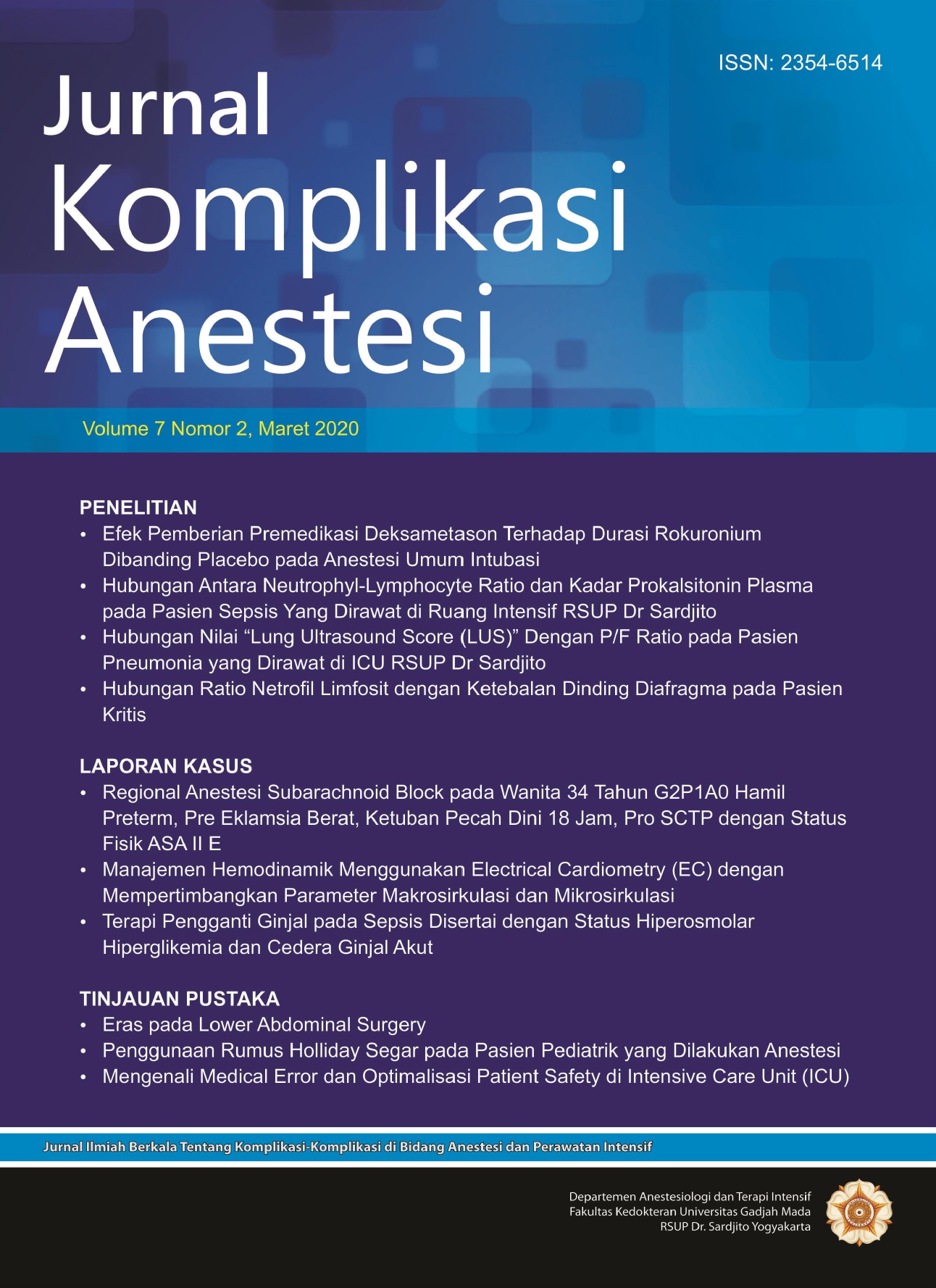Hubungan Antara Neutrophyl-Lymphocyte Ratio dan Kadar Prokalsitonin Plasma pada Pasien Sepsis yang Dirawat di Ruang Intensif RSUP Dr Sardjito
Abstract
Background: The immune response of leukocytes to physiological stresses such as tissue damage, severe trauma, major surgery and sepsis is characterized by increased neutrophil levels and decreased lymphocyte levels. In pathological conditions due to severe infection or systemic inflammation, the NLR will increase, so that NLR can be used for clinical evaluation in patients with systemic inflammation. This study aims to determine whether there is a correlation between alteration of Neutrophyl-lymphocyte ratio and plasma procalcitonin as a parameter of infection severity in sepsis patients treated in intensive care RSUP Dr Sardjito.
Methods: Prospective observational correlation study. The study was conducted in Intensive care RSUP Dr. Sardjito Yogyakarta for 5 months (starting June 2019). Subject: 29 patients of sepsis admitted to intensive care RSUP dr. Sardjito on June-October 2019.
Results: Positive correlations between Neutrophil-lymphocyte ratio and plasma procalcitonin on day 0, day 1 and day 3 of observations, r=0,220 (very weak), r=0,389 (moderate), and 0,065 (very weak). Positive significant correlation was found on day 1 of observation. Meanwhile, on analysis between Neutrophillymphocyte ratio and plasma procalcitonin, Positive correlations were obtained on day 0-1, day 1-3 and day 0-3 of observations, r = 0.159 (very weak), r = 0,450 (moderate) and 0,235 (very weak). The significant positive correlation (p<0.05) was found in alterations between day 1-3. Conclusion: There were no strong correlations between Neutrophyl-lymphocyte ratio and plasma procalcitonin in sepsis patients treated at ICU RSUP Dr Sardjito on day 1 of observation.><0.05) was found in alterations between day 1-3.
Conclusion: There were no strong correlations between Neutrophyl-lymphocyte ratio and plasma procalcitonin in sepsis patients treated at ICU RSUP Dr Sardjito on day 1 of observation.

Copyright (c) 2020 Erry Alamsyah Asjhuri Wibowo, Juni Kurniawaty, Akhmad Yun Jufan

This work is licensed under a Creative Commons Attribution-NonCommercial-ShareAlike 4.0 International License.
The Contributor and the company/institution agree that all copies of the Final Published
Version or any part thereof distributed or posted by them in print or electronic format as permitted herein will include the notice of copyright as stipulated in the Journal and a full citation to the Journal.
















